Joseph Stalin - The Iron Premier of USSR (1878 - 1953)
Joseph Stalin (1878-1953) was a Soviet statesman and politician who served as the leader of the Soviet Union from the mid-1920s until his death in 1953. Stalin played a crucial role in the transformation of the Soviet Union into an industrial and military power, but his leadership was also marked by authoritarianism, purges, and a totalitarian regime. Here is an overview of Stalin's life and his role as the leader of the USSR:
Early Life and Political Rise:
Birth and Early Years:
Joseph Vissarionovich Stalin was born on December 18, 1878, in Gori, Georgia, then part of the Russian Empire. He was originally named Ioseb Besarionis dze Jughashvili.
Entry into Revolutionary Politics:
Stalin became involved in revolutionary activities and joined the Bolshevik faction of the Russian Social Democratic Labour Party (RSDLP) led by Vladimir Lenin.
Role in the Russian Revolution (1917):
Stalin played a significant role in the Bolshevik seizure of power during the October Revolution of 1917. He held key positions in the newly formed Soviet government.
Leadership in the Soviet Union:
Rise to Power:
After Lenin's death in 1924, a power struggle ensued within the Communist Party. Stalin gradually outmaneuvered his rivals, including Leon Trotsky, to become the leader of the Soviet Union.
First Five-Year Plan (1928-1932):
Stalin launched the First Five-Year Plan to rapidly industrialize the Soviet economy. This involved collectivization of agriculture and the establishment of state-controlled industries.
Totalitarian Rule and Purges:
Great Purge (1936-1938):
Stalin initiated the Great Purge, a series of political purges and mass persecutions, to eliminate perceived enemies within the Communist Party and society. This led to mass arrests, show trials, and executions.
Cult of Personality:
Stalin cultivated a cult of personality, portraying himself as the infallible leader and the embodiment of the Soviet state. His image was promoted through propaganda, literature, and art.
World War II:
Non-Aggression Pact with Hitler:
In 1939, Stalin signed a non-aggression pact with Nazi Germany, known as the Molotov-Ribbentrop Pact. This agreement included secret protocols dividing Eastern Europe into spheres of influence.
Invasion by Nazi Germany (1941):
Despite the pact, Nazi Germany invaded the Soviet Union in 1941. Stalin rallied the Soviet people and played a crucial role in the Soviet victory over the Nazis in the Eastern Front of World War II.
Post-War Era:
Yalta Conference (1945):
Stalin participated in the Yalta Conference with Allied leaders Winston Churchill and Franklin D. Roosevelt to discuss the post-war reorganization of Europe.
Cold War and Division of Germany:
Tensions between the Soviet Union and the Western Allies escalated, leading to the division of Germany and the beginning of the Cold War.
Death and Legacy:
Death of Stalin:
Joseph Stalin died on March 5, 1953, at the age of 74. His death marked the end of an era, and a power struggle ensued among his successors.
Legacy and Controversy:
Stalin's legacy is controversial. While he is credited with industrializing the Soviet Union and leading the country to victory in World War II, his leadership was marred by authoritarianism, human rights abuses, and the deaths of millions due to political purges and famines.
Impact on the Soviet Union:
Stalin's rule left a lasting impact on the Soviet Union, shaping its political, economic, and social structures. The repercussions of his policies continued to influence the country long after his death.
Joseph Stalin's leadership had a profound and lasting impact on the Soviet Union, shaping its trajectory from an agrarian society to an industrialized superpower. However, his rule was marked by authoritarianism, political repression, and human rights abuses, leaving a complex legacy that is still debated and analyzed to this day.
-
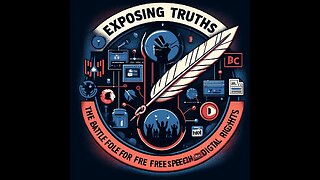 1:03:27
1:03:27
Talk Nerdy 2 Us
7 hours agoExposing Truths: Julian Assange's Battle and the TikTok Conspiracy
37.9K6 -
 1:58:50
1:58:50
Laura Loomer
9 hours agoEP47: Georgia GOP Rocked With Anti-Trump Scandal Ahead of State RNC Convention
65.5K87 -
 2:20:49
2:20:49
Roseanne Barr
10 hours agoWe finally got Ryan Long!!!! | The Roseanne Barr Podcast #48
73K90 -
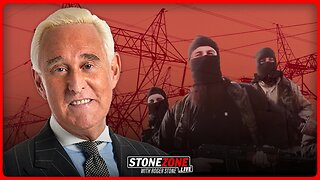 1:01:06
1:01:06
The StoneZONE with Roger Stone
12 hours agoWill Terrorists Take Down America's Power Grid? With Glenn Rhoades | The StoneZONE w/ Roger Stone
59K27 -
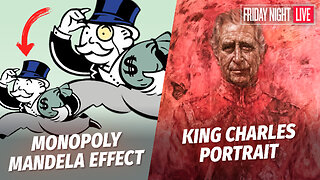 1:03:58
1:03:58
Edge of Wonder
12 hours agoAce Ventura: Mandela Detective, King Charles Portrait & Weird News
59.1K58 -
 1:40:05
1:40:05
The Quartering
16 hours agoWhy Modern Women Suck w/Hoe_Math
89.1K53 -
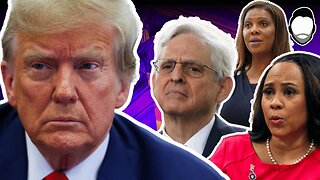 1:43:26
1:43:26
Robert Gouveia
12 hours agoGarland SHAKING over CONTEMPT; Congressional MELTDOWN; Fani RAGES at Senate; Tish INVESTIGATED
82.1K96 -
 1:48:05
1:48:05
2 MIKES LIVE
14 hours ago#67 2ML Open Mike Friday, we have a LOT to talk about!
48.2K6 -
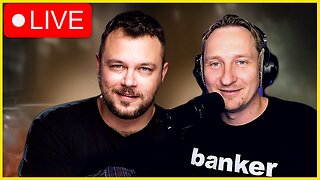 2:27:40
2:27:40
WeAreChange
13 hours agoIt’s NOT Just The Frogs — They’re Turning All The Animals GAY??
84.4K35 -
 1:02:40
1:02:40
In The Litter Box w/ Jewels & Catturd
1 day agoPolice State | In the Litter Box w/ Jewels & Catturd - Ep. 570 - 5/17/2024
93.8K55